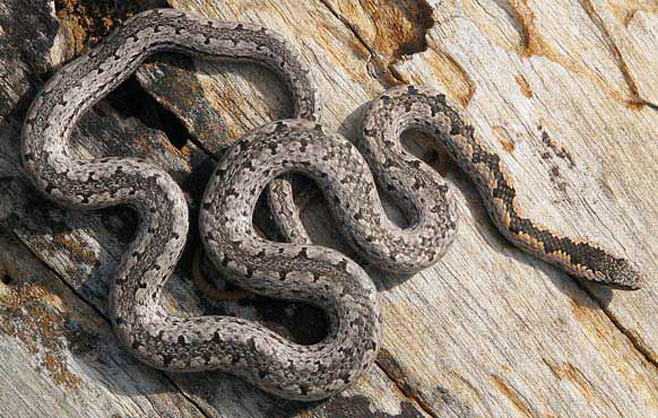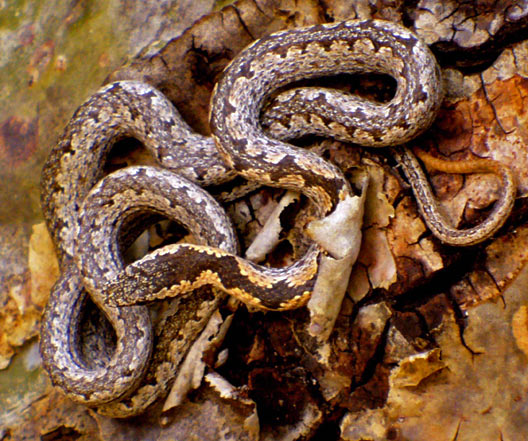|
Hemirhagerrhis nototaenia (Eastern bark snake, Mopane
snake)
Oostelike basslang; Mopanieslang [Afrikaans]
Life >
Eukaryotes
>
Opisthokonta >
Metazoa
(animals) > Bilateria > Deuterostomia >
Chordata >
Craniata > Vertebrata (vertebrates) > Gnathostomata (jawed vertebrates) >
Teleostomi (teleost fish) > Osteichthyes (bony fish) > Class:
Sarcopterygii (lobe-finned fish) > Stegocephalia (terrestrial vertebrates) >
Tetrapoda
(four-legged vertebrates) > Reptiliomorpha > Amniota >
Reptilia (reptiles) >
Romeriida > Diapsida > Lepidosauromorpha > Lepidosauria >
Squamata > Serpentes
(snakes) > Family: Colubridae > Subfamily:
Psammophinae
 |
|
Hemirhagerrhis nototaenia (Eastern bark snake, Mopane
snake), Mpumalanga, South Africa. [M. Douglas ©, from
SARCA Virtual Museum] |
 |
 |
|
Hemirhagerrhis nototaenia (Eastern bark snake, Mopane
snake), Limpopo, South Africa. [W.D. Haacke ©, from
SARCA Virtual Museum] |
Eastern bark snake swallowing gecko (Lygodactylus
capensis). [P. Webb ©, from
SARCA Virtual Museum] |
Identification
Distribution and habitat
Food
Eats small lizards (particularly skinks and day geckos -
see photo above) and
rarely frogs.
Predators, parasites and disease
Eaten by other snakes.
Reproduction
Oviparous (egg-laying), lays between 2 and 8 eggs in
summer.
Longevity
Medical importance
The venom of this snake is weak and unlikely to be harmful
to man.
Links
References
-
Broadley, D.G. 1983. FitzSimons' Snakes of Southern
Africa. Delta Books, Johannesburg.
-
Marais, J. 2004. A Complete Guide to Snakes of Southern Africa.
Struik Publishing, Cape Town.
|
